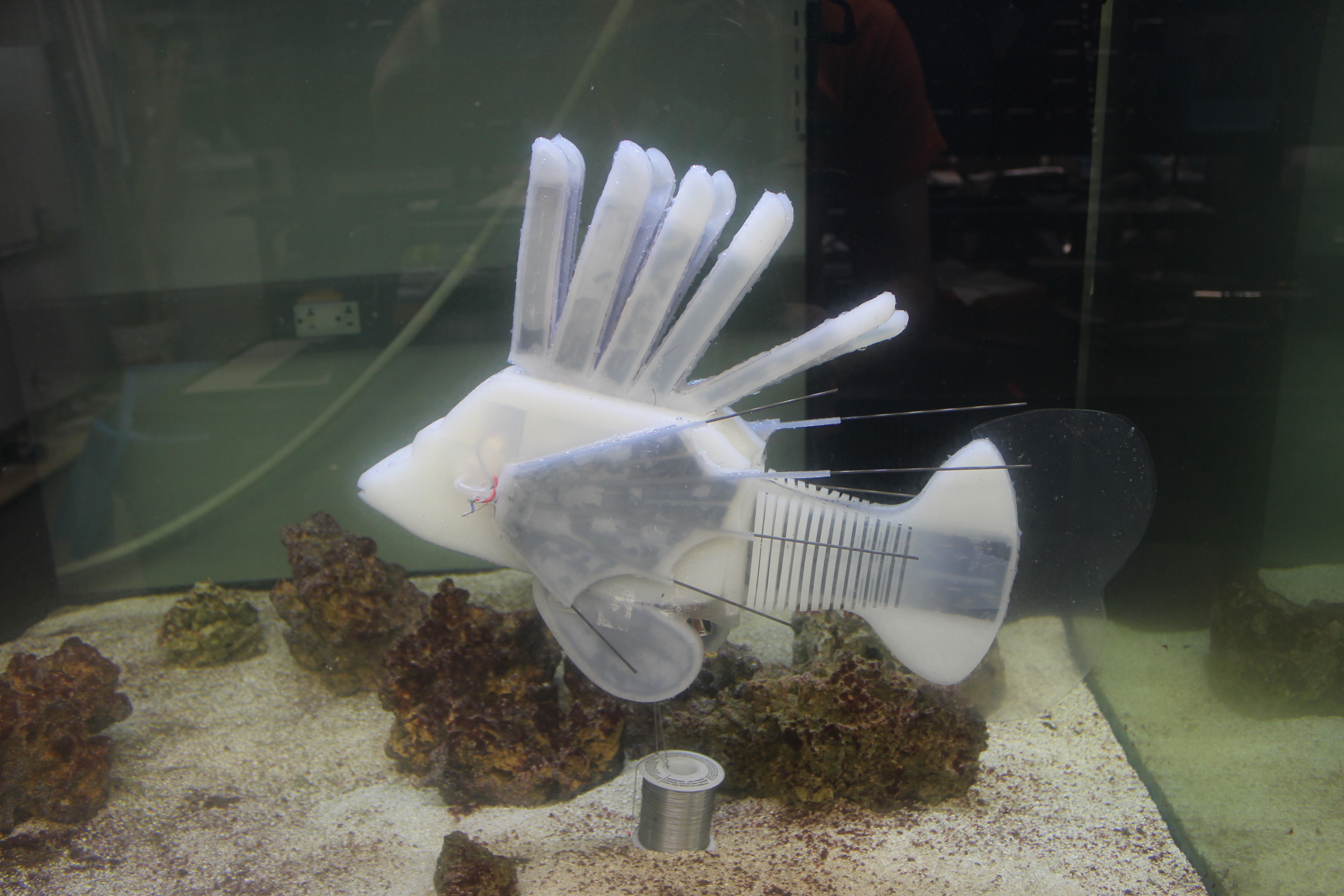Media Release
From: Springer NatureRobot fish powered by synthetic 'blood'
A synthetic circulatory system consisting of a hydraulic liquid that mechanically drives and electrically powers a soft robotic lionfish is demonstrated in a Nature paper this week. In tests of the system, the robot was able to swim against a current and could fan its pectoral fins. The findings could lead to improved energy storage, efficiency and autonomy in future robot designs.
Robots are typically composed of isolated systems required for specific tasks. For example, a material may function solely as the battery, but this means that scaling up the system requires additional battery packs, which increases weight, and modifications may be required to maintain the performance of the robot. One solution to this issue is to use batteries that serve multiple functions.
Robert Shepherd and colleagues identified hydraulic fluids used in robots for force transmission as also having the potential for energy storage. The authors created a synthetic vascular system, embedded in a lionfish-inspired robotic fish, made of interconnected zinc iodide flow-cell batteries that contain a liquid electrolyte. The liquid is circulated around the robot, powering the onboard pumps and electronics through electrochemical reactions. Simultaneously, the pumping of the liquid transmitted mechanical work to the fins, allowing the robot to swim. In tests, the robot was able to swim for long durations (with a maximum theoretical operating time of over 36 hours) and at a speed of more than 1.5 body lengths per minute against a current.


